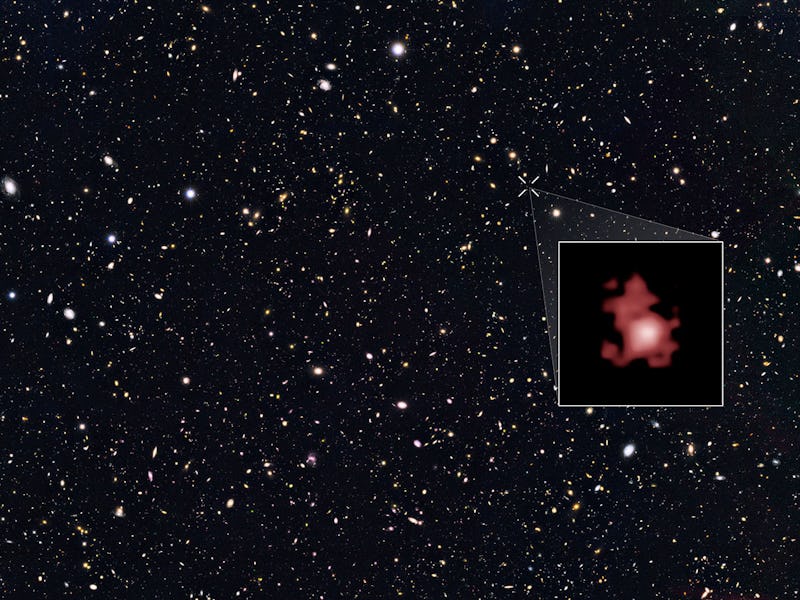The Hubble Space Telescope Breaks Another Distance Record
By peering off into the most remote galaxy ever seen in the universe.

The Hubble Space Telescope has seen some shit, and broken quite a few records in the process. It just broke another — scientists at NASA and ESA used Hubble to measure the distance of the farthest galaxy ever observed.
The name of the galaxy: GN-z11. The distance: 13.4 billion light-years away, in the direction of the constellation Ursa Major. That means the galaxy came into existence just 400 million years after the Big Bang — we’re looking at something 3 percent its current age. It’s the oldest celestial object ever measured, beating out the 13.2 billion light-year EGSY8p7 galaxy.
“We’ve taken a major step back in time, beyond what we’d ever expected to be able to do with Hubble,” Yale astronomer Pascal Oesch, the principal investigator of the new findings, said in a news release. The results will be published in an upcoming issue of Astrophysical Journal.
The researchers describe GN-z11 as 25 times smaller than the Milky Way and possessing just 1 percent of the latter’s mass in stars. Yet, given its size, it’s an unusually bright galaxy that continues to grow 20 times faster than the Milky Way.
The new galaxy (at z = 11.1) in relation to Hubble.
“It takes really fast growth, producing stars at a huge rate, to have formed a galaxy that is a billion solar masses (one solar mass is equal to the mass of the Sun) so soon,” said UC Santa Cruz astronomer and study co-author Garth Illingworth.
Turning 26 this year, Hubble has been one of the most valuable space instruments ever built and launched, greatly surpassing initial expectations. The 13.4 billion light-year cosmic distance record is likely to stand until the launch of the upcoming James Webb Space Telescope in 2018.